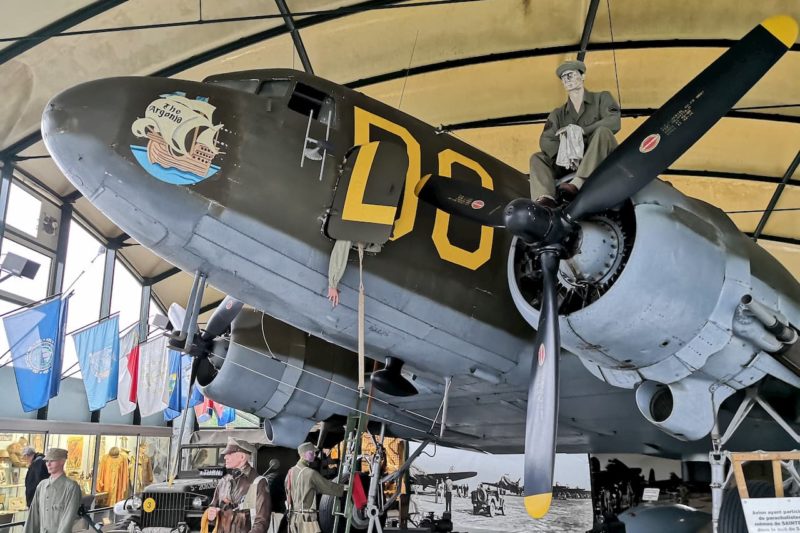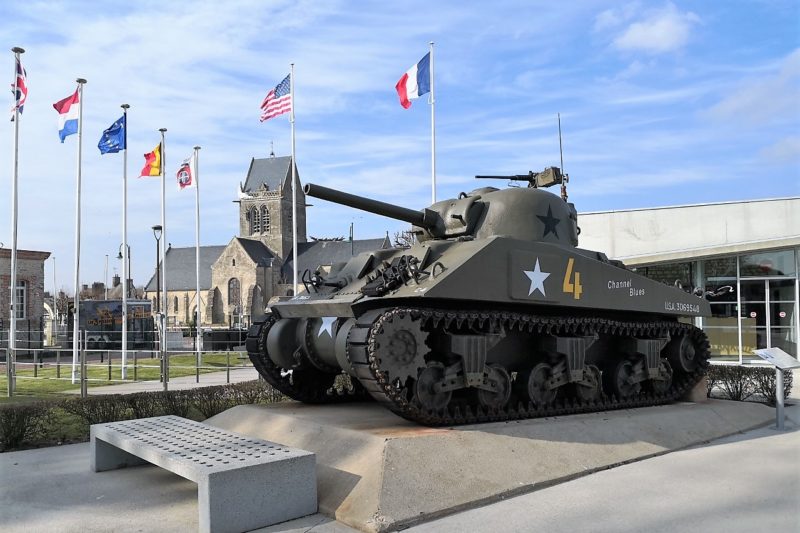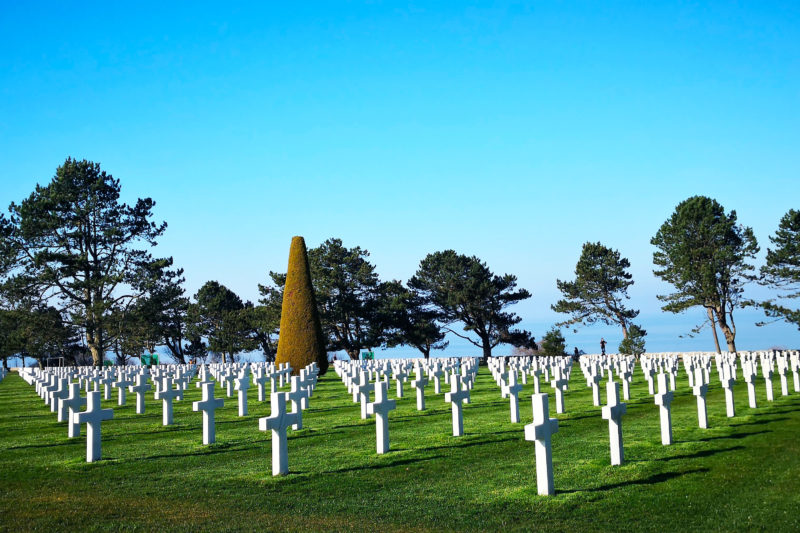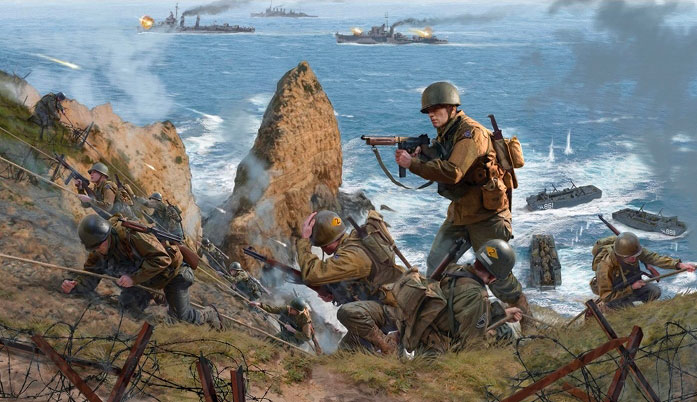Tour code : JUNO1
 Canadian Tour
Canadian Tour
Canadians in normandy d-day beaches
Juno Beach and Pegasus Bridge
Day trip from Paris in a small group aboard a Minivan (max 7 pax)
- Information
- Tour Description
- Location
- Gallery
- Similar Tours
THE PRICE INCLUDES
- Small group tour (Max 7 participants)
- Travel aboard an air-conditioning Minivan vehicle
- Guided sightseeing tour with English-speaking guide
- Admission tickets to Juno Beach Centre
THE PRICE DOES NOT INCLUDES
- Hotel pickup and drop-off
- Food and drinks
- Gratuities
- Pickup in central Paris
- introduction
- STOP 1 - Pegasus Bridge (30mn)
- STOP 2 - Canadian War Cemetery in Bény-sur-Mer (20mn)
- STOP 3 - "Canada House" in Besnières-sur-Mer (20mn)
- STOP 4 - Juno Beach Interpretation Center and Museum in Courseulles-sur-Mer (1hour 10mn)
- STOP 5 - Lunch Time in Courseulles-sur-Mer (1hour)
- STOP 6 - Graye-sur-Mer (20mn)
- STOP 7 - Canadian Memorial at the Gardens of the Abbaye d'Ardenne (20mn)
- STOP 8 - Canadian Memorial Gardens in Caen (20mn)
- STOP 9 - General Von Richter underground Bunker in Caen (40mn)
- Return and dropp off in central Paris
In the morning the driver guide will pick you up at 06:30 am at the following adress : LIDO 116 Avenue des Champs-Elysées, 75008 Paris
(Easy to access by metro Line 1 and just get off at the Metro station « George V » or RER A « Charles de Gaulle Etoile)
You will travel to the Normandy beaches aboard a comfortable and air-conditioned minivan (8 pasengers max).
This journey of one day in Lower Normandy will embarks you in the footsteps of the brave Canadians soldiers who fought for our liberty so far away from their homelands. Operation Neptune was the codename of the largest military' seaborne and airborne invasion for D-day ever organized.
Logistics, infrastructures, air forces supremacy were the keys success and enabled the allies to win the battle of Normandy. During that day, you will discover not only one of the most important episodes in modern history (so well related in the 1962 film «The Longuest Day») but also beautiful countrysides (known as « le bocage ») in one of the historical' oldest and greatest region of France.
With your driver-guide you will travel to the Normandy D-day landing beaches (Canadian and British sectors) in an air-conditioned minivan. Once you arrive in the Calvados county in Normandy, you will stop to see the iconic movable bridge which was broadcast in the famous 1962 movie the "longuest day".
Pegasus Bridge is a bascule bridge, that was built in 1934, that crossed the Caen Canal, between Caen and Ouistreham, in Normandy, France.
Also known as the Bénouville Bridge after the neighbouring village, it was, with the nearby Ranville Bridge over the river Orne, a major objective of the British airborne troops during Operation Deadstick, part of Operation Tonga in the opening minutes of the Allied invasion of Normandy on 6 June 1944 during the Second World War.
A unit of glider infantry of the 2nd Battalion, the Oxfordshire and Buckinghamshire Light Infantry, British 6th Airborne Division, commanded by Major John Howard, was to land, take the bridges intact and hold them until relieved.
The successful taking of the bridges played an important role in limiting the effectiveness of a German counter-attack in the days and weeks following the Normandy invasion.
The Bény-sur-Mer Canadian War Cemetery is a cemetery containing predominantly Canadian soldiers killed during the early stages of the Battle of Normandy in the Second World War. It is located in and named after Bény-sur-Mer in the Calvados department, near Caen in lower Normandy. As is typical of war cemeteries in France, the grounds are beautifully landscaped and immaculately kept. Contained within the cemetery is a Cross of Sacrifice, a piece of architecture typical of memorials designed by the Commonwealth War Graves Commission.
The men who fell on the beaches and in the bitter bridgehead battles are buried in Beny-sur-Mer Canadian War Cemetery which, despite its name, is near the village of Reviers. The cemetery contains 2,049 headstones enclosed by pines and maples. These mark the dead of the 3rd Division and the graves of 15 airmen.
The mayor and people of Reviers take a special interest in the cemetery for, although it bears another name, they feel it to be their own. Fine hedges decorate the entrance, and the flanking registry buildings have platforms from which the visitor can see the whole area and appreciate the skill and devotion that has gone into the planning and design of this superb cemetery.
“Within sight of this house over 100 men of the Queen’s Own Rifles were killed or wounded, in the first few minutes of the landings.”
That stark inscription welcomes visitors at the entrance of a large, timber-framed house overlooking Juno Beach, in the village of Bernières-sur-Mer, France. “La Maison des Canadiens," or Canada House, is one of the most iconic buildings in Canadian military history. It was one of the first houses liberated by Canadian soldiers on D-Day, 6 June 1944, and has since become a familiar historic landmark, standing in the backdrop of the many black-and-white photographs showing troops landing on the sands of this village in Normandy.
This particular house was one of the few left intact, perhaps because it was the favoured home of an occupying German officer.
The left-hand side is owned by the family of Hervé Hoffer, whose grandfather owned the home during the war but was evicted by the Germans.
In 1984, the 40th anniversary of D-Day when large numbers of surviving veterans first began returning on pilgrimages to Juno Beach, Hoffer met some of the Canadians who had actually liberated his house.
The Juno Beach Centre’s permanent exhibit draws on photographs, documents, multimedia, maps, and artefacts to tell the story of the Canadians who volunteered for military service or mobilized at home to contribute to the war effort. It also presents the battles that took Canadian units from Sicily to Italy and from Normandy to the Netherlands.
The Centre pays homage to the 45,000 Canadians who lost their lives during the War, of which 5,500 were killed during the Battle of Normandy and 359 on D-Day.
The Centre is not only a museum about the war. It also portrays the personal accounts and real-life stories of the society that these soldiers bequeathed to their children and that now forms Canada.
Permanent Exhibitions
Room A Courseulles, June 06th 1944
In this first room, visitors stand in a simulated landing craft to watch a film which puts them into the mindset of Canadians during the Second World War. Images of war, training, D-Day, as well as, Canada during the war years are projected on the walls, while Canadian soldiers and their families describe what they were thinking and feeling at the time.
Room B Canada in the 1930’s
Upon exiting the introduction film, which sets the tone of the permanent exhibit, visitors are given reference points from which to draw an understanding of Canada on the eve of war. The geography, demographics, economic situation, state of the military, politics and the social climate of the time are presented. Young visitors initially ‘meet’ Peter & Madeleine via a terminal located in the main hall. In this circular room and throughout the permanent exhibit, the “young public” circuit is presented through the eyes of these two young ‘virtual’ Canadians of the 1930-40s.
Room C Canada goes to War
This room, comprised of two areas, follows the transformation of the country as it enters the war and builds its armed forces which saw over one million men and women enlist into its ranks.
Canada declares war on Germany on September 10th, 1939 – In a simulated Canadian living room, the speeches of various protagonists announce the entry into war. The voices of Hitler, Daladier, Chamberlain and Mackenzie King can all be heard on period radios.
Civilians and Soldiers: Canadians on Every Front – This area shows that the entire country was mobilized during the Second World War. On both sides of a long curved corridor, visitors learn about the different aspects of this mobilization.
Room D Road to Victory
The visit continues with a presentation of the different campaigns in which Canadians fought, each contributing to the final outcome of the war: the Battle of Italy, Normandy, the Scheldt, Rhineland and Victory. This room also showcases some of the other military branches that played vital roles in the final outcome such as: the medical corps, war correspondents, engineers, etc. Finally this room presents different themes such as: the Canadians on D-Day, the First Nations at War in Europe, the Canadian Flag, the 1st Canadian Parachute Battalion and Canadians behind Enemy Lines.
Many Canadian families lost loved ones: over 45,000 Canadians died in their fight for freedom. Their names scroll across the ceiling to be remembered. On the other hand, large numbers of Canadians returned home to resume their lives and actively participate in developing contemporary Canada.
Room E Some Came Back, Others Did Not
The evocative title of this room marks the human toll of Canada’s war, while at the same time introduces hope for a better future.
Many Canadian families lost loved ones: over 45,000 Canadians died in their fight for freedom. Their names scroll across the ceiling to be remembered. On the other hand, large numbers of Canadians returned home to resume their lives and actively participate in developing contemporary Canada.
In this room, four alcoves line the wall and give visitors another perspective of the war. They can listen to period letters or essays written by Canadians in either English or French. It is in this room that the young public encounters the two young virtual guides Peter & Madeleine for the last time.
Room F They Walk With You
The film entitled “They Walk With You” is an immersive experience using powerful video and emotionally engaging audio, including the voices of the Canadian war correspondents Marcel Ouimet and Matthew Halton. The film utilizes Second World War newsreel footage from a variety of sources and, along with dramatic recreations, re-enacts the role and sacrifice of Canadian infantry soldiers during D-Day and the Battle of Normandy. Viewer discretion is advised.
An infantry soldier in war is often not privy to the “big picture”; his job is to fight and try to survive. “They Walk With You” immerses visitors in an infantry soldier’s experience.
Courseulles is a charming seaside resort located on the landing beaches, close to Caen and Bayeux. Its two sandy beaches, fishing and boating harbour are definitly an excellent location to take a break for lunch in a local restaurant or you will just decides by yourself of your own choices of meals (own expense).
Monument of The Lorraine Cross
Cross of more than 18 m high, located facing the sea, this monument commemorates the return of General de Gaulle to the French soil on June 14, 1944 after crossing the English Channel on board the French destroyer La combattante.
Churchill AVRE Tank – One Charlie
A British Churchill AVRE tank which stands as a glorious memorial of the landing operations on 6 June 1944. It was unable to bridge a deep culvert on D-Day one hundred yards south of the site and the members of its crew were obliged to escape under enemy fire with very heavy casualties.
As many as 156 Canadian prisoners of war are believed to have been executed by the 12th SS Panzer Division (the Hitler Youth) in the days and weeks following the D-Day landings. In scattered groups, in various pockets of the Normandy countryside, they were taken aside and shot.
In a garden next to the monastery Abbaye d'Ardenne a Canadian memorial is situated. The memorial commemorates 20 executed Canadians soldiers. The Abbaye d'Ardenne, a massive collection of mediaeval buildings -including an early Gothic church and several farm buildings encircled by walls and surrounded by grainfields. This was where Kurt Meyer, Commander of the 25th Panzer Grenadier Regiment (of the 12th Panzer Division), had established his headquarters.
Designed by twelve students of architecture from the universities of Montreal and Ottawa, the Canadian Garden encourages reflection.
The low wall lists the name of the 122 Normandy communes liberated by Canadian soldiers. The black granite slab is inscribed with Virgil's words: "Nulla dies umquam memori vos eximet aevo" (no day will ever erase you from the memory of time).
In an underground section of the Memorial of Caen, the former command post of German general Wilhelm Richter played a leading role during the first decisive weeks of the Battle of Normandy.
This strategic historic site has been completely redesigned to tell its story and offer visitors new keys to understanding German occupation and resistance.
During the return drive to Paris you will have time to relax aboard the minivan before to be dropped off in Central Paris (Drop off in front of the "LIDO DE PARIS 116 Av. des Champs-Élysées, 75008 Paris" in the evening between 07:30 pm till 08:30 pm).
Easy there to catch a taxi cab either to find metro station (Ligne 1 Métro : George V).





